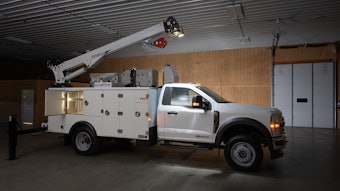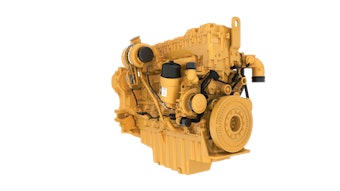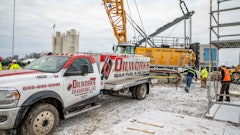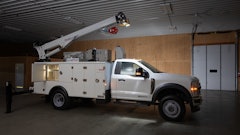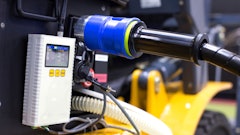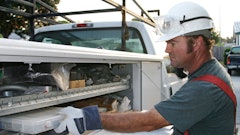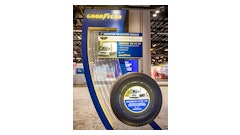
Advanced crash-avoidance features spreading through new cars and pickup trucks are proving popular with drivers.
The Insurance Institute for Highway Safety recently surveyed owners of Dodge/Jeep and Toyota models with adaptive cruise control, front crash prevention and other features. Most participants said they found the systems useful and would want them again on their next vehicle, which was similar to what Volvo and Infiniti owners told researchers in previous surveys (see "Volvo owners give thumbs-up to crash avoidance features," Dec. 20, 2012, and "Luxury owners embrace systems to skirt crashes," Nov. 18, 2009).
One new finding is that younger drivers may be reaping more benefits from crash-avoidance technologies than older drivers.
Reactions to crash avoidance features are important because many systems provide only warnings and require drivers to take action. Drivers who find the systems irritating may decide to deactivate them, forgoing their benefits. In addition, researchers want to be sure that having the features doesn't prompt people to become too reliant on them and drive less safely as a result. So far, that doesn't seem to be a major problem, the surveys show.
Dodge and Jeep owners
Interviews were conducted with 215 owners of 2011 Dodge Charger, Dodge Durango and Jeep Grand Cherokee models with adaptive cruise control and forward collision warning and with another 215 owners of models with blind spot detection and rear cross-traffic detection. Most people said they always keep the systems turned on, and more than 90 percent of owners with each system said they would want it again in their next vehicle.
More than half the owners said they believed forward collision warning had helped prevent a crash. While the actual number of crashes prevented is almost certainly much lower, this result is an indication that drivers trust the system and believe it is helping to keep them safe. On the flip side, about 3 in 5 owners said the system sometimes warned them when there was no risk of crashing.
Thirty-six percent of owners who had used adaptive cruise control — which is similar to cruise control but automatically slows the vehicle to maintain a set following distance when the vehicle encounters leading traffic — said they followed the vehicle in front of them less closely when using the system, while only 4 percent followed more closely.
Drivers age 40 and younger were most likely to report that forward collision warning had prevented a collision and that they follow the vehicle ahead less closely with adaptive cruise control. Drivers 60 and younger were more likely than their older counterparts to always keep forward collision warning turned on, even though they also were more likely to say the alerts were annoying. Annoyance was highest for drivers 40 and younger.
Regarding blind spot detection, nearly 4 of 5 drivers said the feature prevented them from colliding with a vehicle in another lane. The same number said the rear cross-traffic warnings had prevented a collision while backing out of a driveway or parking space. (Again, such answers illustrate drivers' perceptions but may not be accurate estimates of the numbers of crashes prevented.) There was some evidence that the drivers were coming to rely on the technology, with one-third saying they turn their heads less often to check blind spots with blind spot detection.
Toyota owners
The second study focused on 2010-13 Toyota Sienna and Prius models equipped with adaptive cruise control, front crash prevention and lane departure warning. A total of 183 people were interviewed.
Ninety percent of respondents said they would want the front crash prevention system again in their next vehicle. Twenty-seven percent of those who had ever driven with the system on thought a collision warning had helped prevent a crash, and 20 percent thought automatic braking had. Sixteen percent said the system had issued alerts when there was no risk of crashing. Thirteen percent said the same about automatic braking.
Like front crash prevention, adaptive cruise control was popular among Toyota owners. Ninety-two percent said they would want it again. Nearly two-thirds of survey participants said they always use the feature on high-speed roads, while just 13 percent said they never had used it.
As in previous surveys, lane departure warning was less popular. Seventy-one percent of participants said they would want the system again. Only 13 percent said they always turned the system on. More than a quarter of respondents said they had experienced false alarms with this feature.
Many respondents reported that they used turn signals more often with lane departure warning and followed less closely with adaptive cruise control. As in the Dodge/Jeep survey, these reports of safer driving were more common among drivers 40 and younger.
Although the purpose of the studies was to look at the acceptance of crash avoidance technologies among drivers of mainstream vehicles, the owners of these particular Dodge, Jeep and Toyota models may not be typical. Optional crash avoidance technologies sometimes add thousands of dollars to the cost of a vehicle and often are available only as part of more expensive packages. The resulting prices can approach those of luxury models. That might help explain why the reactions to the technologies didn't appear to differ much from those of luxury-car drivers, except for the effect of driver age.
